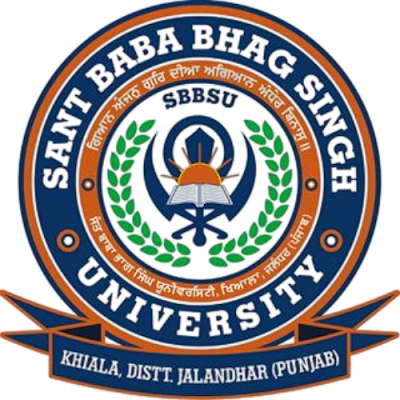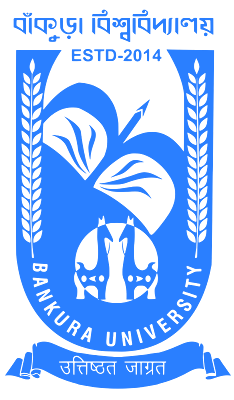26 INFANTRY DIVISION
- Get link
- X
- Other Apps
26 INFANTRY DIVISION
When the Japanese invaded Burma in 1942, the various units in training or stationed around Barrackpur near Calcutta in India were hastily formed into the Calcutta Division on March 20, 1942. On May 15, the Division was retitled the Indian 26 Infantry Division. The Division's badge was a Bengal Tiger stepping through a blue triangle, representing the delta of the Ganges River, on a black background. It formed part of Indian XV Corps, but late in 1942, it was taken over directly by Eastern Army. Once reorganised, the division was in reserve for the first part of the Second Arakan Offensive, once again under XV Corps. The formation badge and sleeve patch of this Division has a ‘Bengal tiger stepping through a triangle’ on black background.
 |
| 26 INFANTRY DIVISION |
- Get link
- X
- Other Apps
You Made it Popular
BAPURAO DESHMUKH COLLEGE OF ENGINEERING (BDCE)
BAPURAO DESHMUKH COLLEGE OF ENGINEERING (BDCE) The emblem of Bapurao Deshmukh College of Engineering (BDCE) features an open book , a lotus , a pair of gear wheels , a factory , a set of transmitter towers , a bridge and water dam in a circle ensconced by a blue border inscribed with the name and place of the college. The book refers to knowledge, education, learning and wisdom; the lotus denotes purity, enlightenment, rebirth, transformation, personal growth, resilience, overcoming obstacles and divine beauty; and the other motifs refer to the subject disciplines of engineering .
THE ANNASAHEB SAVANT CO-OP. URBAN BANK MAHAD LTD. (AS BANK)
THE ANNASAHEB SAVANT CO-OP. URBAN BANK MAHAD LTD. (AS BANK) The red circular emblem of The Annasaheb Savant Co-op. Urban Bank Mahad Ltd. (AS Bank) has a gear wheel inscribed with its name housing a traditional ‘laman diya’ (Maharashtrian lamp). Its tagline in Marathi ‘आपली बँक…आपली माणसं’ meaning ‘Our Bank…Our People’ is written below the pictorial. The gear wheel refers to interconnectedness, efficiency, precision, progress, advancement, synchronisation, timing, order and structure and the lamp refers to light, hope and positivity.
ADITYA INSTITUTE OF TECHNOLOGY AND MANAGEMENT (AITAM)
ADITYA INSTITUTE OF TECHNOLOGY AND MANAGEMENT (AITAM) The emblem of Aditya Institute of Technology and Management (AITAM) features a red and yellow housing the motifs of a lotus with leaves, an engineer, an electrical transmission tower, a hand holding a spanner, a microprocessor, a satellite dish antenna, and a computer; supporting a red banner inscribed with the motto of the college ‘Developing Leaders Entrepreneurs Innovators’ and a rising sun and its initials ‘AITAM’. The shield is supported by a pair of laurels. The shield denotes purity, innocence, perfection, peace, new beginnings, loyalty and joy; the sun represents life, energy, power, positivity, illumination, light and clarity; the lotus denotes purity, enlightenment, rebirth, transformation, personal growth, resilience, overcoming obstacles and divine beauty; the laurels are symbols of ceremonies, victory, achievement, hard work and dedication; and the other motifs refer to the subject disciplines of engineering.
HANDICRAFTS AND CARPET SECTOR SKILL COUNCIL
HANDICRAFTS AND CARPET SECTOR SKILL COUNCIL The logo of Handicrafts and Carpet Sector Skill Council (HCSSC) has a light pink and cyan five pointed star created using strokes and dots similar to thick wool threads representing the weave and knots of a carpet. Its name is written on the right of the pictorial. The colours represent art, finesse, colourfulness and craftsmanship.
HAWKINS COOKERS LIMITED
HAWKINS COOKERS LIMITED Hawkins Cookers Limited has been in business since 1959. Today, it has two offices, three factories and about seven hundred persons working. The company claims that Hawkins pressure cookers are pressure-locked for safety - like a jetliner door! Its logo is written in serif bold font with stark transition of strokes in black in the middle of a cooker’s lid in red. This is ensconced by a black borderline.
MUTHOOT INSTITUTE OF TECHNOLOGY AND SCIENCE (MITS)
SANT BABA BHAG SINGH UNIVERSITY
SANT BABA BHAG SINGH UNIVERSITY The emblem of Sant Baba Bhag Singh University (SBBSU) in orange and blue has a Khanda forming the background for orange rising sun supported by an open book and a pair of laurels on sides surmounted by its acronym. All these are ensconced by a orange circular border with blue and white outlines on which the motto of the university in Punjabi ‘ਗਿਆਨ ਅੰਜਨੁ ਗੁਰਿ ਦੀਆ ਅਗਿਆਨ ਅੰਧੇਰ ਬਿਨਾਸੁ’ (Guru Arjun Dev, Sloku 14, Page 293) meaning ‘To whom the Satguru has Bestowed the Glory of Knowledge, his Ignorance (form) Darkness is Destroyed’ and its name in Punjabi are written. This is circumscribed by a blue border with orange and blue outlines bearing the name of the university in English. At the bottom of the circular seal, on a banner, its place is written in English. Khanda is the symbol of Sikhism; the rising sun denotes life, energy, power, positivity, illumination, light and clarity; the open book denotes education, knowledge, learning and wisdom; the lau...
KARNATAKA POLICE
KARNATAKA POLICE Police in Karnataka were called by various names in different regions. After initiation of policing, they were initially called Thoti, Talwar, Umbalidhar, Kattubidi, Neeraganti etc. The police primarily with policing used to do other jobs entrusted to them. Mysore State was the predecessor to Karnataka State, which was created on November 1, 1965. Sri. L. Rickets was appointed as first Inspector General of Police. During the rule of Maharajas of Mysore, the policing existed in different variants. Hukumnama or Kandachara was issued for policing during the rule of Maharaja Mummudi Krishna Raja Wodeyar (1799-1811) at old Mysore region under the British rule, when Sri. Poornaiah was Dewan. The soldiers belonging to Maharaja’s infantry were entrusted with responsibility of policing, which European soldiers supervised. Amaldhars (now Tehasildhars) the revenue officers were Taluk Police Chiefs. They were assisted by Faujidhars, who also collected taxes from peasants. Th...
BANKURA UNIVERSITY
BANKURA UNIVERSITY Bankura University (BU) was established by the West Bengal Act XIX of 2013 and the assent of the Governor was first published in the Kolkata Gazette, Extraordinary on January 6, 2014. The university is recognised under Section 2(f) & 12(B) of the UGC Act, 1956. The university is located in Bankura. The blue colour emblem of the university has a shield on which the motifs of motifs of a bow and arrow; palash flower 'Butea monosperma', a pair of terracotta horses, a pair of laurels and its name. It is surmounted by its name in Bengali. Its motto in Sanskrit ‘उत्तिष्ठत जाग्रत’ (Mantra 14, Valli 3, Chapter 1, Kathopanishad) meaning ‘Arise Awake’ is placed on a banner which below the shield. The shield protection, courage, heritage, authority and bravery; the bow and arrow represent the native tribes; the terracotta horses represent the native art and crafts; the laurels symbolise hard work, dedication, victory and achievement and the colour blue symbol...
.png)
.png)
.png)
.png)

.png)



%20Private%20Limited.png)
Comments
Post a Comment